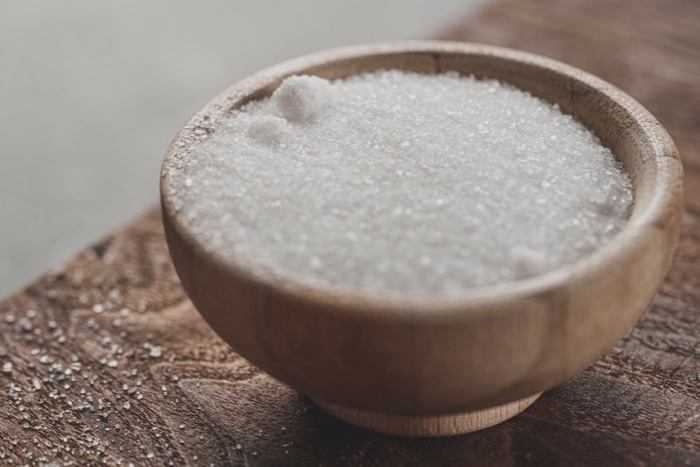Understanding White Wine Sweetness Levels
Unravel the mysteries of white wine sweetness levels and become an expert in no time - explore, taste and enjoy the delight!

White wine is a versatile and beloved beverage, prized for its freshness, complexity and wide range of flavours. One crucial aspect that connoisseurs and casual drinkers often consider when selecting a bottle is the level of sweetness.
Understanding white wine sweetness levels can greatly enhance our appreciation and enjoyment of this delicious beverage.
From dry to lusciously sweet, each degree of sweetness adds a unique dimension to the overall flavour profile, so it is essential to unravel this fascinating aspect to make informed decisions when tasting or matching white wines.
Dry White Wine: A Refreshing Delight
Understanding sweetness levels in dry white wine can be a perplexing task for both novice and experienced wine enthusiasts. The concept of sweetness is not determined solely by the variety or region but by the amount of residual sugar remaining in the final product.
While the term dry generally indicates little or no perceptible sweetness, it is important to note that some dry white wines may have a slight hint of residual sugar.
To understand the levels of sweetness in dry white wine, factors such as grape maturity at harvest and yeast fermentation must be considered. More mature grapes tend to have higher sugar content, leading to a sweeter end product if not fermented to full dryness.
In addition, winemakers can manipulate sugar levels by stopping fermentation early or adding sweetening agents before bottling. These techniques allow for variation within the dry white wine category and offer diverse flavour profiles ranging from completely dry and crisp to subtly dry with fruity notes.
Pure expressions of Chardonnay or Sauvignon Blanc can provide an invigoratingly crisp experience on the palate, while styles such as Riesling or Gewürztraminer can offer nuanced layers of floral aromas combined with sweeter nuances.
Semi-Dry: A Subtle Balance
Semi-dry white wines offer a balance between the sweetness of dessert wines and the overall dryness of their counterparts. These wines have a moderate level of residual sugar which makes them accessible to those who prefer a touch of sweetness without an overpowering sugary taste.
Understanding the levels of sweetness in semi-dry white wine is essential to fully appreciate and enjoy these versatile beverages.
It is important to note that sweetness levels can vary between different grape varieties and winemaking techniques. Generally speaking, however, semi-dry white wines are in the range of six to 12 grams per litre of residual sugar.
£10
Special offer available for a minimum purchase of £99. Discount voucher valid for four weeks from issue date. Cannot be used in conjunction with other promotions except for the free delivery special offer.

This means that they have enough natural sugars from the grapes to create a pleasant mouthfeel and add depth to the flavour profile while remaining relatively crisp and refreshing.
An interesting aspect of semi-dry white wines is how they pair with food. The subtle hint of sweetness can complement various dishes by adding a harmonious contrast or highlighting certain flavours.
For example, combining semi-dry Riesling with spicy Asian cuisine, such as Thai or Indian dishes, creates an exquisite balance between spicy and fruity. In addition, these wines are excellent choices for seafood lovers, as they enhance the delicate flavours without overwhelming them.
Fruity and Floral White Wine
Fruity white wines such as Riesling or Gewürztraminer tend to have varying degrees of sweetness. Ranging from completely dry to deliciously sweet, these wines offer a variety of flavour profiles to explore.
A German Kabinett Riesling, for example, typically sits on the drier side with a hint of fruitiness, while late-harvest versions can be intensely sweet. Floral whites such as Muscat or Viognier also exhibit varying ranges of sweetness levels.
Muscat-based wines, known for their aromatic character, range from fresh and dry to dry and honeyed. Viognier, on the other hand, offers medium-sweet options that beautifully complement its rich texture.
Finding the perfect level of sweetness in fruity and floral white wine depends largely on personal preference, but understanding the differences can help guide you to your ideal choice. Whether you prefer a refreshingly dry style or enjoy sweeter notes, exploring different levels of sweetness allows you to appreciate the nuances each wine brings.
Sweet and Deliciously Complex
The sweetness of sweet white wines comes mainly from residual sugar, which is the unfermented grape sugars left in the wine after fermentation.
Sweet white wines are classified in various levels of sweetness, ranging from dry to dessert wines. Completely dry whites have negligible residual sugar and are often crisp and refreshing on the palate.
Moving up the scale, dry or slightly sweet wines have a touch of residual sugar, balancing their acidity and offering a touch of sweetness without being overpowering. For those who prefer a more pronounced sweetness, there are semi-sweet whites that have noticeable residual sugar but remain well-balanced overall.
It is worth noting that while sweetness is an essential characteristic to consider when choosing a sweet white wine, it should not be the sole determining factor. Other elements, such as acidity, fruit aromas and even alcohol content, play an important role in shaping your experience with each bottle.
Sweetness Level Description Notable Varietals Dry White Wine Bone-dry with minimal residual sugar and high acidity. Offers a crisp and refreshing taste. Sauvignon Blanc, Albariño, Pinot Grigio Semi-Dry White Wine A balance between dry and sweet, with noticeable but not overwhelming sweetness. Riesling, Chenin Blanc, Viognier Fruity and Floral White Wine Moderate sweetness that enhances the fruity and floral aromas. Moscato, Gewürztraminer, Torrontés Sweet White Wine Prominent sweetness with higher levels of residual sugar. Often enjoyed as dessert wines. Sauternes, Late Harvest Riesling, Ice Wine
Final Considerations
The variety of sweetness levels in white wine gives enthusiasts a wide range of options to explore and enjoy. From the freshness and acidity of dry wines to the rich sweetness of dessert wines, each category has its own distinctive charm and character.
By understanding these levels of sweetness, wine lovers can select the white wine that best suits their preferences and occasions.
You May Be Also Interested in
- White Wine Basics
- 10 Galician whites ideally priced for all budgets
- Piedmontese white wines
- Godello, fresh white wines
- Italian whites, naturally summery
- Riesling: all you need to know about this grape and its wines
- Pinot gris: everything you need to know about this grape and its wines
- The godello grape: everything you need to know about this variety and its wines